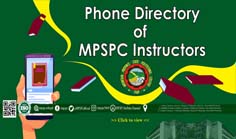ECLECTIC LEARNING MODULES IN SPEECH COMMUNICATION
Johnny P. Cayabas Jr.
Introduction
For most people, the ability to speak a language is synonymous with knowing that language since speech is the most basic means of human communication.
Learning to speak in a language is a very important part of second language education. The ability to communicate in a second language clearly and efficiently contributes to the success of the learners in school as well as to their success later in other phases of life.
But before students can speak a language fluently, they must first be taught how to use it; hence, language teachers need to teach speaking in their classes. Despite its importance, teaching speaking has been undervalued as English language teachers have continued to teach speaking just as a repetition of drills or memorization of dialogues.
Today's world, however, requires that the goal of teaching speaking should improve students' communicative skills, because, only in that way, can students express themselves and learn how to follow the social and cultural rules appropriate in each communicative circumstance.
The researcher observed that college students find speaking most dreadful especially in Speech Communication classes. The students’ anxiousness is very apparent when they are required to read a dialogue or perform a speaking activity in class. Their inhibitions in speaking could be attributed to lack of confidence in speaking, strong influence of their L1 (first language), fear of ridicule, as well as to other factors.
For this reason, it is essential that language teachers pay great attention to the teaching of speaking. Rather than leading students by pure memorization, teachers need to provide a rich environment where meaningful communication can take place. To do this, teachers have to design and utilize various strategies that require frequent use of genuine and stimulating communication activities in the classroom. It is clear then that the teacher’s job is to provide the students opportunities to use the language for themselves. Students need to learn how to say what they want to say rather than what they are directed to say.
With this aim, the learning modules developed in this study can contribute a great deal to students in developing their basic interactive skills necessary for life. The eclectic learning materials designed provide such opportunity as their development was anchored on the fundamental beliefs of communicative approach regarding language teaching materials: materials in the classroom should be authentic, real and purposeful, contextualized, and must reflect the language needs of the learner (Murcia, 2006).
These materials provide the learners not only the opportunity to acquire the language but also to develop their communicative skills needed for different purposes. In other words, the instructional materials aim to encourage students to take a more active role in their learning process and at the same time make their learning more meaningful and fun for them.

















